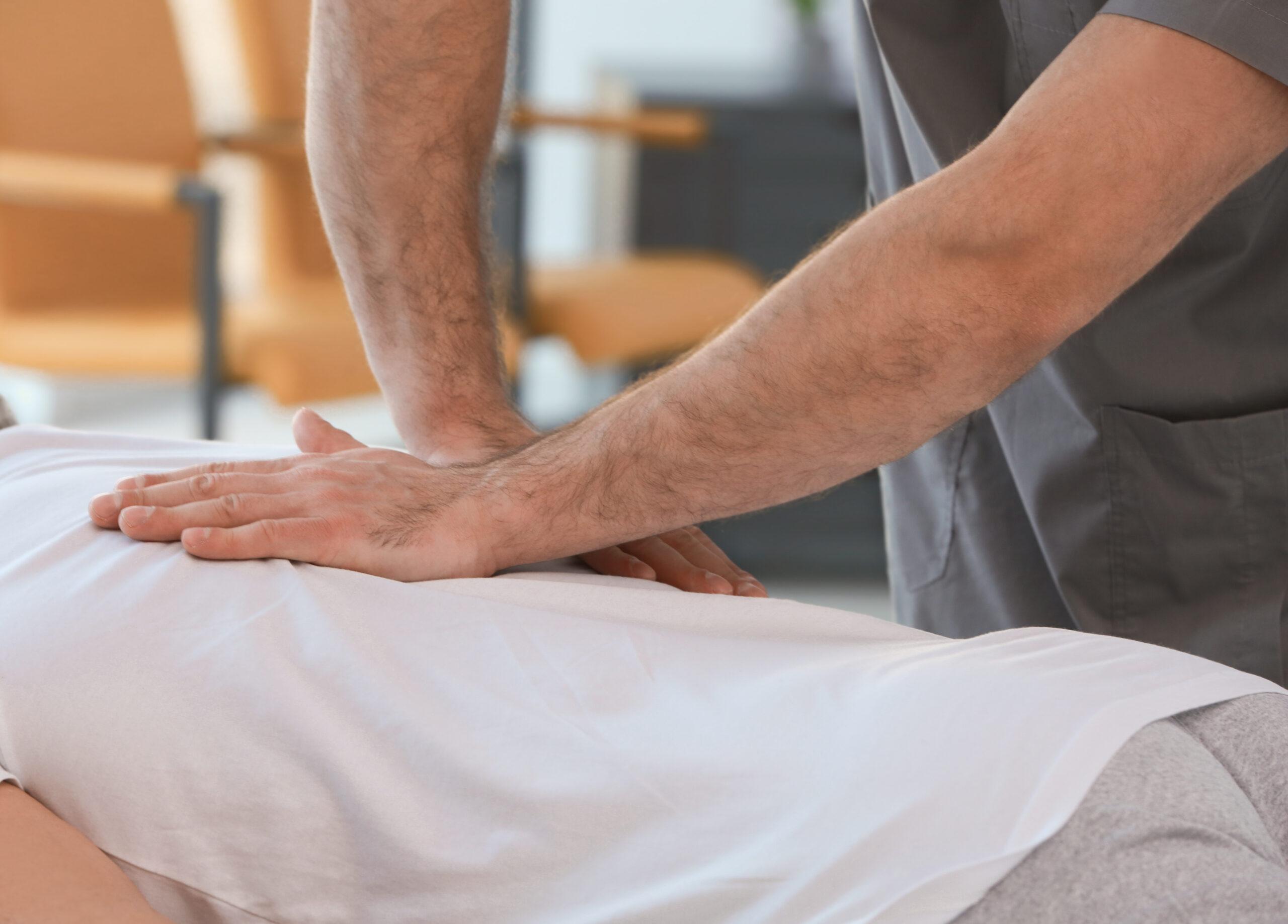Spinal disc problems. When most people think about the spinal column, they primarily visualize the vertebrae — i.e., the bones. They don’t think about the cushions between those bones that prevent them from rubbing against each other, causing wear and tear. These “cushions” are spinal discs. Imagine them as jelly-filled doughnuts with tough and rubbery exteriors.
For starters, a healthy spinal disc has a fluid inner portion called the nucleus pulposus and a tough outer layer called the annulus fibrosus. When a problem arises with either of these components of a spinal disc, it can cause pain and discomfort.
Some of the most common causes of back pain stem from problems related to spinal discs. You may have even heard of these ominous-sounding issues and wondered about the difference between a bulging disc, a herniated disc, and a desiccated disc. But what do they actually mean, and how can you prevent them? Let’s dive in.
What is Disc Desiccation?
As soon as human bodies hit their twenties, spinal discs begin to deteriorate. Over time, this may progress into what is known as degenerative disc disease or disc desiccation. This is a condition where the inner portion of a disc begins to dehydrate and lose fluid. Dehydration compromises the structural integrity of the entire disc, causing it to become thinner.
The thinner the discs are, the worse they are at absorbing high-impact forces and shocks to the vertebrae. In the advanced stages of disc desiccation, vertebrae rub against each other, forming bone spurs, and causing neck and back pain. Symptoms include:
- Pain that moves down to the lower back and butt
- Numbness or tingling in your arms and legs
- Discomfort when lifting objects, bending over, and sitting down
- Pain that might come and go for weeks or months at a time
However, symptoms at this stage may be manageable, without causing debilitating problems. The more significant concern is whether disc desiccation will lead to a bulging disc or a herniated disc.
What is a Bulging Disc?
Picture a tire that is low on air and supporting a significant amount of weight. It bulges and juts where it makes contact with the ground. That is what happens with a bulging disc in the spine. Only a spinal disc bulges out because the outer layer (the disc’s “shell”) has become weak and can no longer hold its shape as well as before.
The disc may bulge uniformly across its entire circumference or unevenly because specific areas have become structurally compromised. The biggest concern surrounding bulging discs is that they might narrow the spinal canal or foramen and
pinch a nerve, resulting in persistent pain or numbness.

What is a Herniated Disc?
A herniated disc – sometimes referred to as a slipped disc or a ruptured disc – is defined by a ruptured outer shell that allows fluid from the center of the disc to leak out. This commonly occurs in the lower back but can happen to any disc.
A herniated disc can become a severe problem for two reasons. First, the fluid might exert pressure on a surrounding nerve, pinching it. Second, some of the proteins in the disc’s fluid can irritate the nerve and cause inflammation.
What are the Risk Factors for Developing Disc Problems?
While each disc problem is unique, risk factors tend to be the same. You may be more prone to a desiccated, bulging, or herniated disc if you:
- Frequently lift or carry heavy loads
- Don’t exercise or lead a sedentary lifestyle
- Have a high body mass index
- Have poor posture
- Are diabetic
- Are a smoker
- Are older than 55
Some of these risk factors are within your control. And some are not, so it’s good to check in with your chiropractor consistently. You may need treatment if there are signs of degenerative disc disease or disc desiccation.
Do I Need Treatment for Spinal Disc Problems?
Every case is different. Spinal discs can often repair themselves over time with minimal medical treatment. You can maintain the health of spinal discs and prevent deterioration in several ways:
- Refrain from lifting things that are too heavy
- Avoid twisting and bending your back — and especially both at the same time
- Adopt a physically active lifestyle
- Increase and maintain muscle power in legs, arms, and trunk
- Regularly stretch and practice back-strengthening exercises (e.g., yoga, tai chi, and Pilates) to enhance spinal flexibility and resilience
- Maintain proper spinal alignment through regular chiropractic care
- Lose excess weight
- Correct poor posture
- Quit smoking

However, if your chiropractor determines that your case is severe enough or seems to be worsening, they’ll likely recommend treatment options.
Can I See a Maple Grove Chiropractor for Spinal Disc Issues?
It may be reversible if a spinal disc issue is detected early enough or is not too severe. This is thanks to a number of treatments and chiropractic techniques that have proven effective at treating bulging discs, herniated discs, and other degenerative disc conditions:
Spinal Manipulation for Degenerative Disc Disease
With this treatment, your chiropractor identifies joints with restricted or abnormal movement and executes gentle thrusts to restore normal mobility to those joints. Back exercises and stretches are more effective when natural and ideal alignment has been restored, thereby reducing undue pressure or friction on the disc.

Flexion Distraction for Bulging and Herniated Discs
This technique involves having the patient lie on a table specially built to stretch and elongate the spine. With this method, your chiropractor can zero in on painful areas along the spine with precise and rhythmic movements. These movements are intended to relieve pressure on affected nerves. Depending on the case, a combination of other treatments, such as physiotherapy and muscle stimulation, are added to flexion distraction to help achieve full recovery.
Other Chiropractic Therapies to Manage Disc-Related Pain
Like any chiropractic treatment plan, working on spinal disc issues requires a holistic, whole-body approach. Manual therapies such as
therapeutic massage and trigger point therapy may be necessary to relieve muscle tension further. Oher therapies may provide relief such as ultrasound and electrical stimulation. Ultrasound delivers sound waves and gentle heat deep into muscle fibers and may be incorporated to improve circulation and ease pain, stiffness, and spasms. Interferential electrical stimulation uses a low-frequency current to stimulate muscles and lessen inflammation.
Dr. Tieri of Total Spine Health and Injury Center is an expert at diagnosing and treating spinal disc problems. If you’re in Maple Grove and worried about an emerging issue or searching for relief from disc-related pain,
schedule an appointment with us today!

 However, if your chiropractor determines that your case is severe enough or seems to be worsening, they’ll likely recommend treatment options.
However, if your chiropractor determines that your case is severe enough or seems to be worsening, they’ll likely recommend treatment options.

